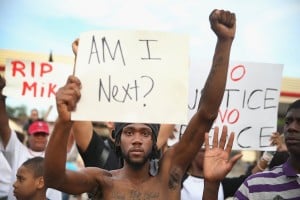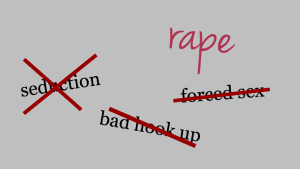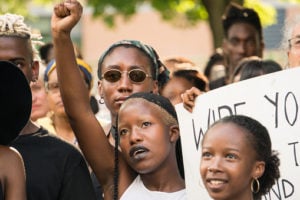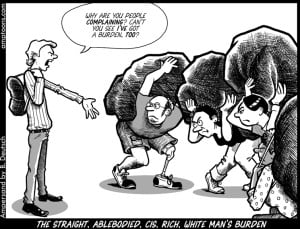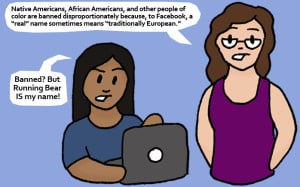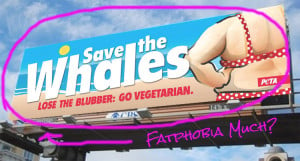
A person with their hand in their hair frowns at a laptop computer in frustration. Source: Luke Baynes
Feminism can be broadly defined as advocacy for the sociopolitical rights and enfranchisement of women and full gender equality.
“Feminism,” however, is not one unified movement.
There are sex-positive feminists who argue against the “sex-negative” politics of Andrea Dworkin and her ilk in the early 90s, queer feminists who focus more on LGBTQIA+ issues, and Black feminists whose activism centers on Black women and women of color.
Here is where the term “intersectionality” a focus on the intersecting oppressions and privileges associated with race, gender, sexuality, disability, class, nationality, and so on comes into play.
And what we’ve got is a new generation emerging, emboldened and empowered by feminist, anti-racist, and queer blogospheres, that aims to be intersectional in their beliefs and approaches to social justice.
And yet, one glaring division still exists in modern feminisms despite calls for intersectionality: the traditional divisions of the “Western” and “Eastern” worlds. And this division is exacerbated by the Western response to the “plight” of Muslim women.
While outliers do exist, many Western feminists still view Islam and feminism as exclusive categories that are at odds. From support of or indifference towards FEMEN’s Islamphobic “activism,” championing Malala Yousafzai for standing up to the Taliban while ignoring the Western influence on poverty and violence in Pakistan, or spreading around of this NSFW photo of Egyptian activist Aliaa Elmahdy, Western feminists are adept at missing the point when it comes to women in Islam.
And that point is that yes, Muslim women face unique challenges, specifically in Muslim regions, but that criticizing Islam is an inadequate way to fight patriarchy and, moreover, disrupts solidarity with Muslim women.
Western feminists fail Muslim women on a number of fronts.
Here are four important examples and ways these injustices can be avoided.
1. Feeding into the White Savior Complex and Ignoring the Impact of Western Colonialism
Although the “white savior” has been a trope played out in entertainment and international policy for hundreds of years, writer Teju Cole reimagined the term in a 2012 article titled “The White-Savior Industrial Complex” where Cole discusses the inherent racism in the then-popular KONY 2012 and Invisible Children movements and the politics behind them.
The “white savior complex” posits the West (the “white man” a la Kipling’s infamous poem “The White Man’s Burden”) as the hero who “saves” the Eastern or African world, be it Ugandans under the regime of Joseph Kony or Muslim women oppressed by “sharia law” in places like Saudi Arabia and Pakistan.
It takes little explanation to reveal this worldview as blatantly racist and xenophobic, yet it persists in American and European liberalism and, more disturbingly, among Western feminists who aim to expose the oppression of Muslim women and “help” them.
Western feminists often point to the evils imposed upon women in other, less economically developed parts of the world in their justifications for their beliefs. From female genital mutilation to honor killings to the #BringBackOurGirls hashtag, these issues continue to play a large part in Western feminist rhetoric.
While those examples (and the countless other horrors visited upon women around the world used to justify Western intervention and inspire sympathy) are quite obviously terrible, they fail to recognize the significant political nuances surrounding the conversations.
They fail to notice that many of the regions where these practices occur are victims of Western imperialism and that many groups that carry them out, like Boko Haram and the Taliban, are direct results of colonialist regimes.
As explained by Emile Schepers, author of an article about the colonial roots of Boko Haram (the Nigerian extremist group that kidnapped nearly 300 girls from a boarding school earlier this year that inspired the #BringBackOurGirls social media movement), the public outcry and ensuing movement in the West treats the symptoms while ignoring the cause — in this case, British colonialism — of the issue.
2. Ignoring the Long and Vibrant History of Muslim Feminism
To a lot of Western feminists, Islam and feminism seem to be mutually exclusive categories.
Stereotypes about the nearly one billion Muslims worldwide abound, casting their female half (roughly 1/16 of the world’s population) as monolithically oppressed.
From Somalia to Yemen and the US to Morocco, from Australian muslimahs to French niqabis to Muslim women in India, the oppression remains constant. These women, by and large, are portrayed as voiceless victims of their patriarchal religion.
Not only are these Islamophobic portrayals dangerous and erroneous, but they also completely fail to take into account the rich and oft-overlooked histories of both Islamic feminist movements and feminist movements within Muslim-dominated countries.
Muslim feminisms, feminist movements in Muslim regions, and Muslim feminists in the West are as diverse and contradictory as their mainstream, white counterparts.
From Red Lips High Heels (a Lebanese blog) to MuslimGirl (the Seventeen magazine of Muslimahs) and many, many others, Muslim feminisms are experiencing an online renaissance alongside their non-Muslim counterparts.
Paired with the historical gains of Islamic feminisms — from the Daughters of Hajar’s “Islamic Bill of Rights for Women in Mosques” to the Turkish feminisms from the Ottoman period onward — Islamic feminists have been making waves in their ancestral homelands and beyond.
Add to that the feminisms of converts and a collage as multi-faceted and brilliant as traditional mosaics that adorn the world’s great mosques emerges — a diversity that Western feminists should not only heed when discussing women in Islam, but could also use as a learning tool in their own feminisms.
3. Creating a ‘Straw Muslimah’ and Serving Western Hegemony
The same stereotypes that lead to the incorrect narrative of the victimized Muslimah also serve a greater purpose: to stigmatize Islam as a whole and create a scapegoat for continued Western domination over Muslim regions.
The “Staw Muslimah,” a pious, submissive child-bearer does not exist in a vacuum. She is described as the victim of her husband, her father, or both. She is forced to wear hijab either by law in Muslim majority countries or by her oppressive husband and/or community. She longs for the freedoms of Western women and if she knows how to read, she is often not allowed literature other than the Quran. She is the poster child of Western interventionism.
And if “we” don’t save her, she will either have a miserable, painful life of violence or die in an honor killing.
There is no shortage of problems with this racist trope, spouted explicitly during the initial stages of the US invasion of Afghanistan and even by the Feminist Majority Foundation’s “Campaign for Afghan Women and Girls.”
The agreement between two seemingly contradictory interests — women’s rights and American militarism — is more than coincidental, and it has everything to do with protecting Western power by “spreading democracy,” a thinly veiled term used to justify wars in the Middle East for nearly 15 years.
Dubbed “imperialist” or “colonialist feminism,” this brand of interventionism aims to justify Western wars under the guise of human rights.
As Deepa Kumar, a Rutgers associate professor of Media Studies wrote recently, imperialist feminism is rooted “on the construction of a barbaric, misogynistic ‘Muslim world’ that must be civilized by a liberal, enlightened West.”
The motives behind “Save the Women” campaigns from Afghanistan to Nigeria are as muddy as they are impassioned: Is it well-intentioned interest in standing in solidarity with women or Western power play being proposed?
4. Ignoring the Actual Wants and Needs of Muslim Women
Despite concern for the lives and rights of Muslim women, Western feminists rarely consult actual Muslimahs about what they want or need — or if they even want their “help” to begin with.
Be those women self-identified feminists or not, their demands are often overlooked in favor of pedantic campaigns and legislation.
What do Muslim women want? Their demands are not so far-removed from those of their non-Muslim counterparts, though with a specifically religious bent.
They want (and are willing to fund) seemingly superfluous products (like lube and nail polish) in halal variations; they want to fight back against street harassment and gain political enfranchisement in Muslim majority countries and in the West. And, perhaps most tellingly, they want Westerners to stop viewing them as oppressed, particularly those who choose to cover.
In Who Speaks For Islam?, a book published by Gallup based on findings from worldwide polling of Muslims, the majority of women in both progressive Egypt and repressed Saudi Arabia believe that women should be able to vote free of influence from their families and should hold any job they are qualified for, including top positions of power. They not only want education, but are increasingly educated at the postsecondary level.
Muslim women want what women around the world want: to be protected under the law, to have access to education, to have reasonable expectations of safety.
The one noticeable exception is that Muslim women in the West specifically want the right to practice their religion however they see fit — a right infringed upon in France.
***
Despite an incredible amount of evidence to the contrary, Western feminists continue to “promote women’s rights” in a narrow and often bigoted manner.
Muslim women don’t need saving. They need enfranchisement within feminism.
By continuing the patronizing (and patriarchal) rhetoric and actions of imperialist feminism, Western feminists continue the spread of Western hegemony and hurt Muslim women in the process.
By taking the time to learn about Islam, about the traditional treatment of women based on Muhammad’s teachings and continued fights for women’s rights by Muslim women themselves, Western feminists can not only avoid the perpetuation of injustices they take part in, but can learn to be better allies to other disenfranchised people in the process.
[do_widget id=”text-101″]
Noor Al-Sibai is a Contributing Writer for Everyday Feminism. A queer Arab-American living and loving in the Bible Belt and a recent liberal arts graduate, her interests include intersectional feminism, crying to Drake lyrics, and pizza. Please check out her website at nooralsibai.contently.com, her writing at www.feminspire.com, and follow her on twitter at @nooralsibai. Read her articles here.
Search our 3000+ articles!
Read our articles about:
Our online racial justice training
Used by hundreds of universities, non-profits, and businesses.
Click to learn more








